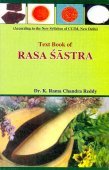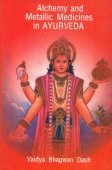Caraka-samhita, Caraka-saṃhitā: 3 definitions
Introduction:
Caraka-samhita means something in Hinduism, Sanskrit. If you want to know the exact meaning, history, etymology or English translation of this term then check out the descriptions on this page. Add your comment or reference to a book if you want to contribute to this summary article.
Alternative spellings of this word include Charakasamhita.
In Hinduism
Ayurveda (science of life)
Dietetics and Culinary Art (such as household cooking)
Source: Shodhganga: Dietetics and culinary art in ancient and medieval IndiaCarakasaṃhitā (चरकसंहिता) enjoys the prime position among Ayurvedic treatises. The text is written in the form of advices of the sage Ātreya to the sage Agniveśa. It is believed that Caraka edited these discussions around 3rd century CE which became popular by the name Carakasaṃhitā.
The text contains eight sections viz.—
- śūtrasthāna,
- nidānasthāna,
- vimānasthāna,
- śarīrasthāna,
- indriyasthāna,
- cikitsāsthāna,
- kalpasthāna,
- siddhisthāna.
Sūtrasthāna contains 30 chapters. Of them the first 28 chapters are divided into seven subsections namely catuṣakas viz. bheṣajacatuṣka, svāsthyacatuṣka, niraddeśacatuṣka, upakalpanācatuṣka, rogacatuṣka, yojanācatuṣka and annapānacatuṣka.

Āyurveda (आयुर्वेद, ayurveda) is a branch of Indian science dealing with medicine, herbalism, taxology, anatomy, surgery, alchemy and related topics. Traditional practice of Āyurveda in ancient India dates back to at least the first millenium BC. Literature is commonly written in Sanskrit using various poetic metres.
General definition (in Hinduism)
Source: WikiPedia: HinduismCaraka Saṃhitā (चरक संहिता): An ancient Indian Ayurvedic text on internal medicine written by Caraka. It is believed to be the oldest of the three ancient treatises of Ayurveda.
Languages of India and abroad
Sanskrit dictionary
Source: Cologne Digital Sanskrit Dictionaries: Aufrecht Catalogus Catalogorum1) Carakasaṃhitā (चरकसंहिता) as mentioned in Aufrecht’s Catalogus Catalogorum:—med. by Śaraka. Io. 335. 359 (cikitsāsthāna). 1445 (indriyasthāna and rasavimānasthāna). 1535 (madanakalpa till uttarasiddhi). Cambr. 21 (3 first books). K. 212. B. 4, 222. Ben. 64. Bik. 635. Kāṭm. 12. Pheh. 2. Oudh. Xiv, 108. Xv, 140. Np. I, 16. V, 194. Bhr. 368. Proceed. Asb. 1865, 139. Oppert. Ii, 8210. Carakasūtra B. 4, 122. Report. Xxxvi. Bühler 558.
—[commentary] Np. V, 32.
—[commentary] by Agniveśa. Sb. 284.
—[commentary] by Kṛṣṇa Vaidya. Quoted Oxf. 318^a.
—[commentary] Carakatātparyadīpikā by Cakrapāṇidatta. L. 2160. Np. V, 194.
—[commentary] by Haricandra. Quoted Oxf. 187^b.
2) Carakasaṃhitā (चरकसंहिता):—Carakasū0tra. read B. 4, 222.
3) Carakasaṃhitā (चरकसंहिता):—med. [Bhau Dāji Memorial] 114. Io. 335 (1-5). 359 (cikitsāsthāna). 881 (2-5). 1445 (indriyasthāna and vimānasthāna). 1335 (7. 8). 1935 ([fragmentary] of the sūtrasthāna). Stein 182.
4) Carakasaṃhitā (चरकसंहिता):—med. by Caraka. Ulwar 1624. 1625 (Sūtrasthāna).
5) Carakasaṃhitā (चरकसंहिता):—med. Ak 925 (inc.). As p. 62 (Sūtrasthāna, and Pañcakarmādhikāra the first 11 chapters of the Siddhisthāna). Śg. 1, 183 p. 159 (inc.). Tb. 141. 142 (1-4. 6-8). 143 ([fragmentary]) 144 (5 and fragments of 3 and 5). 152 ([fragmentary]). C. Tātparyadīpikā by Cakrapāṇidatta. Tb. 145 (1-3). 146 (1, 13 up the end of the work).
Sanskrit, also spelled संस्कृतम् (saṃskṛtam), is an ancient language of India commonly seen as the grandmother of the Indo-European language family (even English!). Closely allied with Prakrit and Pali, Sanskrit is more exhaustive in both grammar and terms and has the most extensive collection of literature in the world, greatly surpassing its sister-languages Greek and Latin.
See also (Relevant definitions)
Partial matches: Samhita, Caraka.
Full-text (+2231): Medaka, Parikartika, Shodhana, Kleda, Pakshaghata, Parpataka, Udvartana, Carmakhya, Shukra, Payasya, Grahani, Samutthana, Sira, Kottakaraka, Purvarupa, Varyovida, Makushthaka, Jivanti, Masuravidala, Vidradhi.
Relevant text
Search found 29 books and stories containing Caraka-samhita, Carakasaṃhitā, Carakasamhita, Caraka-saṃhitā; (plurals include: samhitas, Carakasaṃhitās, Carakasamhitas, saṃhitās). You can also click to the full overview containing English textual excerpts. Below are direct links for the most relevant articles:
Atharvaveda and Charaka Samhita (by Laxmi Maji)
1b. Study of Fever (Jvara) in the Caraka-Saṃhita < [Chapter 5 - Diseases and Remedies in Atharvaveda and Caraka-Saṃhitā]
Caraka (Āyurveda scholar) < [Chapter 1 - Introduction]
Apasmāra (epilepsy) according to Caraka < [Chapter 4 - Diseases and Remedial measures (described in Caraka-saṃhitā)]
History of Indian Medicine (and Ayurveda) (by Shree Gulabkunverba Ayurvedic Society)
Chapter 4 - The Use of Wine < [Part 4 - Some Aspects of Life in Caraka’s Times]
Chapter 4 - The Story of Atreya < [Part 1 - The History of Medicine in India]
Chapter 5 - The Story of Agnivesha < [Part 1 - The History of Medicine in India]
Charaka Samhita and Sushruta Samhita (by Nayana Sharma)
Multiplicity of Textual Strata < [Chapter 1]
The perception of surgery < [Chapter 9]
Hygiene of the body and personal grooming < [Chapter 6]
Philosophy of Charaka-samhita (by Asokan. G)
The historicity of logic and dialectical speculations of Carakasaṃhitā < [Chapter 7 - Logic and Dialectical Speculations]
Other sources of knowledge referred to in Carakasaṃhitā < [Chapter 6 - Source of Knowledge (pramāṇa)]
Bhesajjakkhandhaka (Chapter on Medicine) (by Hin-tak Sik)
(a) Brief History of Āyurveda < [Chapter 2 - Background Information]
Internal Medicine (e): Gastrointestinal Disturbances < [Chapter 5 - Diseases and Treatments in the Chapter on Medicine]
Seven-day Medicines (a): Lipids and Sweets < [Chapter 4 - Medicinal Substances in the Chapter on Medicine]
A History of Indian Philosophy Volume 2 (by Surendranath Dasgupta)
Part 14 - Did Logic Originate in the Discussions of Āyurveda Physicians < [Chapter XIII - Speculations in the Medical Schools]
Part 7 - Growth and Disease < [Chapter XIII - Speculations in the Medical Schools]
Part 6 - Foetal Development < [Chapter XIII - Speculations in the Medical Schools]
Related products



